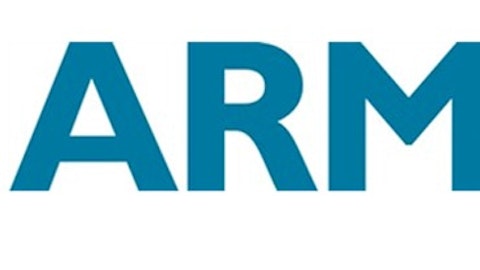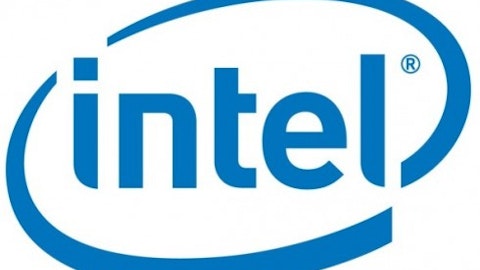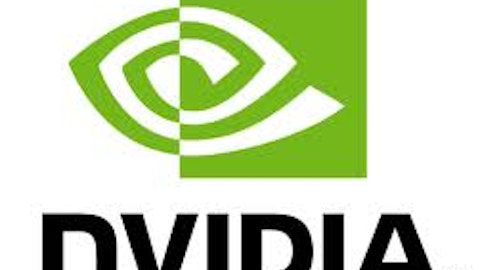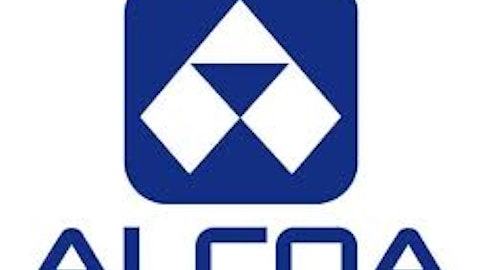There is no question that Intel Corporation (NASDAQ:INTC) has long been established as the 800-pound gorilla of the personal and laptop computer industry. There is also no question that they were horribly slow in recognizing the need to gain entry into the mobile device market and have since struggled to gain momentum and market share in that space. With a new CEO committed to bold and decisive action, will Intel Corporation (NASDAQ:INTC) continue its attempts to develop its own innovative product line for this market segment — or speed up the process and simply buy one?

The future is upon us
Intel Corporation (NASDAQ:INTC)’s new CEO, Brian Krzanich, has created a new division in the company to focus on the rapidly changing and fast growing market for mobile devices. His views would appear to leave the door open to reach his objectives through acquisitions. A purchase of the right company, coupled with Intel’s financial resources, could create a new powerhouse in the supply chain for mobile device chips.Given the time and cost of developing new technologies from scratch, it makes sense for Intel Corporation (NASDAQ:INTC) to pursue acquisitions that will allow them to achieve their objectives faster and cheaper.
Intel Corporation (NASDAQ:INTC) spent a total of $10.15 billion on R&D in 2012, and at the end of the March quarter of 2013, it had a total of $10 billion in cash and short-term investments. This provides it with wide latitude when seeking opportunities to buy instant entry into the mobile device market. Acquiring an existing product line with ongoing R&D would allow Intel to enter this rapidly evolving market with existing products and replacements in the pipeline. This combination would have the potential to turn a competitive business into a dominant one very quickly. It would also virtually eliminate the problem of gaining market acceptance of new and unproven products.
Potential acquisition targets
Cirrus Logic, Inc. (NASDAQ:CRUS) is a fabless designer and developer of analog and mixed signal circuits for both consumer and commercial markets. The term “fabless” in this industry means that it does not own the manufacturing facilities where its chips are produced. Cirrus is estimated to depend on Apple Inc. (NASDAQ:AAPL) for approximately 82% of its sales and its share price has been crushed over the past year.
Those holding shares of Cirrus Logic, Inc. (NASDAQ:CRUS) from its September 2012 high of $45.49 through its June 2013 low of $16.46 would find little to smile about. A business like Intel Corporation (NASDAQ:INTC), looking for instant credibility in the mobile device market, should be licking its lips over the enticing snack an acquisition of Cirrus Logic, Inc. (NASDAQ:CRUS) could provide.
The fact that Cirrus is a supplier to Apple Inc. (NASDAQ:AAPL) in the mobile device market establishes its capability for high-end innovative technology development. The fact that it is a fabless developer is attractive in that it would provide product designs that could be integrated into Intel’s fabrication capabilities and absorb existing excess capacity.
At the current share price of $18.08, Cirrus’ market cap of only $1.15 billion and its price to cash flow multiple of 7.7 give it a size and value that should be very attractive to a company like Intel that needs its expertise and market presence. Considering Intel’s R&D budget and cash position, it is hard to imagine they could find a faster, more cost efficient way to enter the mobile device market than an acquisition of Cirrus Logic.
STMicroelectronics N.V. (ADR) (NYSE:STM) is a semiconductor design and manufacturing company that targets its products to the automotive, consumer, computer and communications infrastructure markets and just might offer exposure to market that Intel Corporation (NASDAQ:INTC) would find interesting and complimentary to its existing business.
While the market capitalization of STMicroelectronics N.V. (ADR) (NYSE:STM), at $8.27 billion, is much larger than that of Cirrus, it would still be within the affordable range for Intel. Given the proximity of the current share price of $9.31 to its 52-week high of $10.05, this acquisition would probably require a much lower premium to current price than would Cirrus. However, acquisition decisions should be based more on actual value than on premium to current market price and STMicroelectronics might fall short in this regard.
Over the past five years, STMicroelectronics N.V. (ADR) (NYSE:STM) has produced negative annual returns on equity, assets and capital of 4.1%, 2.6%, and 3.6% respectively and currently trades at a price to cash flow multiple of 19.31. This price to cash flow is only producing a yield of slightly over 5%. The low yield against the market capitalization, the fabrication facilities that duplicate Intel’s existing excess capacity and the lack of pure focus on mobile devices might make this a less attractive target for Intel.
Final thoughts
If Brian Krzanich really wants to boldly move into the mobile device market, it is hard to imagine a move that would more definitively display that commitment than an acquisition of Cirrus Logic. Intel Corporation (NASDAQ:INTC) could pay twice the current price for this business, and still buy it cheaply and quickly achieve a stated objective. With or without an acquisition, shares of Cirrus are cheap and will rise.
The article Should Intel Buy Its Way Into Mobile Devices? originally appeared on Fool.com and is written by Ken McGaha.
Ken McGaha owns shares of Cirrus Logic. The Motley Fool recommends Intel. The Motley Fool owns shares of Cirrus Logic and Intel. Ken is a member of The Motley Fool Blog Network — entries represent the personal opinion of the blogger and are not formally edited.
Copyright © 1995 – 2013 The Motley Fool, LLC. All rights reserved. The Motley Fool has a disclosure policy.





